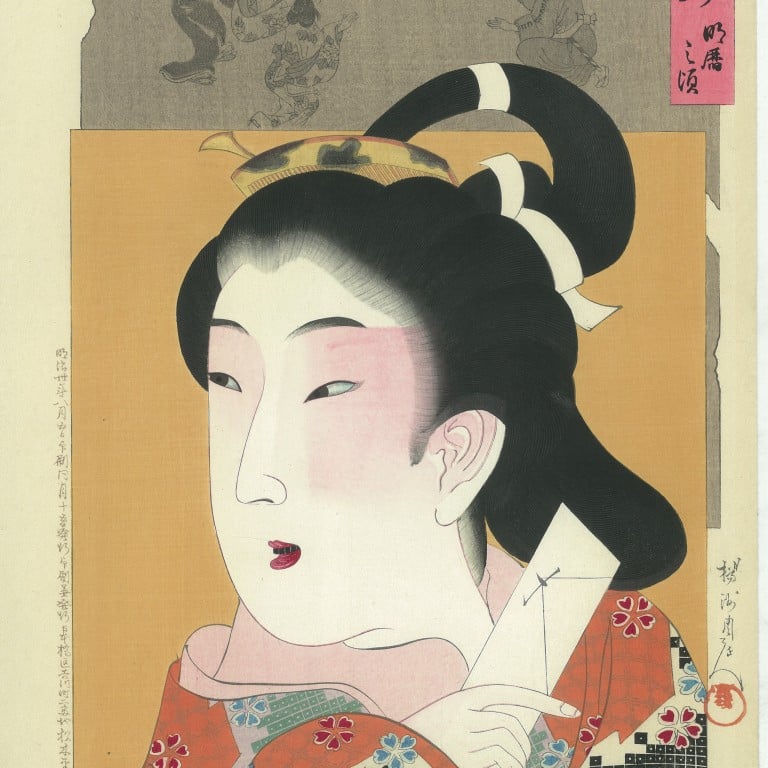
Imperial beauty in China, Japan explored in Hong Kong show – a salute to women throughout history
- Crowning Glory explores how women were able to express themselves despite being closeted in their quarters according to Confucian custom
- Including kingfisher feather tiaras, robes and other textiles, the earliest items on display in the exhibition date back to the 7th century
Walk along Hong Kong’s Hollywood Road, past its many antique shops and those selling Chinese fans, Mao souvenirs and other paraphernalia, and you’ll find the Liang Yi Museum. Behind an unassuming door, the museum is a dedicated space for the antiques collection of millionaire and collector Peter Fung Yiu-fai.
The museum was set up five years ago and houses a collection that incudes four-poster beds, scholarly articles, paintings, screens and a permanent collection of ladies’ ornaments, which are the subject of an exhibition now running at the museum until late February.
“Crowning Glory: The Beauty of Ladies’ Ornaments from Asia and Europe” showcases beautiful craftsmanship in the form of carved backs for mirrors, ornate combs and kingfisher feather tiaras, robes and other textiles. But it also tells the story of how women throughout history in China and Japan were able to express themselves despite being closeted in their quarters according to Confucian custom.
The earliest items on display in the exhibition date back to the 17th century, when both Japanese and Chinese society were deeply rooted in Confucian custom. Confucianism was introduced to Japan from China in the 3rd century via Korea.
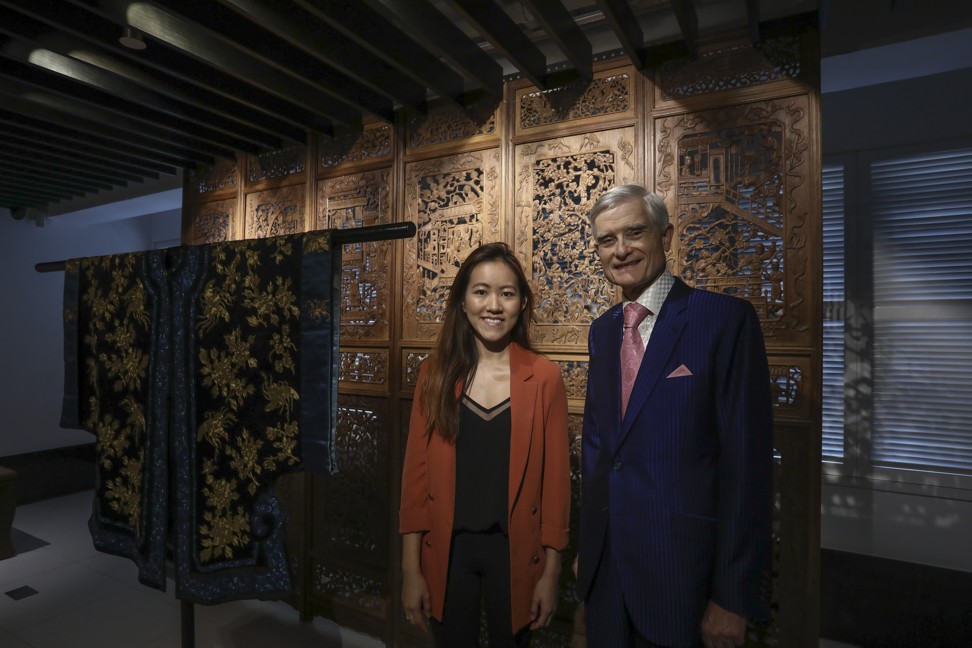
Curator Stephanie Fong Ho-yin explains how men at that time conducted business, while women were at best satellites to the men’s lives, as sisters, wives and mothers.
“First you obeyed your father, then you married and obeyed your husband, then you obeyed your son,” says Fong, adding that aristocratic women would receive more education, so were able to write and paint.
China’s Qing dynasty empresses, their lives and power they wielded, take centre stage at US show
Folding mirror cases, table-top dressing chests and powder boxes all help to illustrate the lives of these women over the centuries.
The first half of the exhibition tells the story of how women in China and Japan adapted to their circumstances – a chaste and modest existence in home confinement. However, that did not stop some of them from painting or producing calligraphy.
The second half follows women into the modern era, as the influence of European states encroaches on both countries. Trade through the East India Company and other enterprises open up the doors and eyes of women to new ideas.
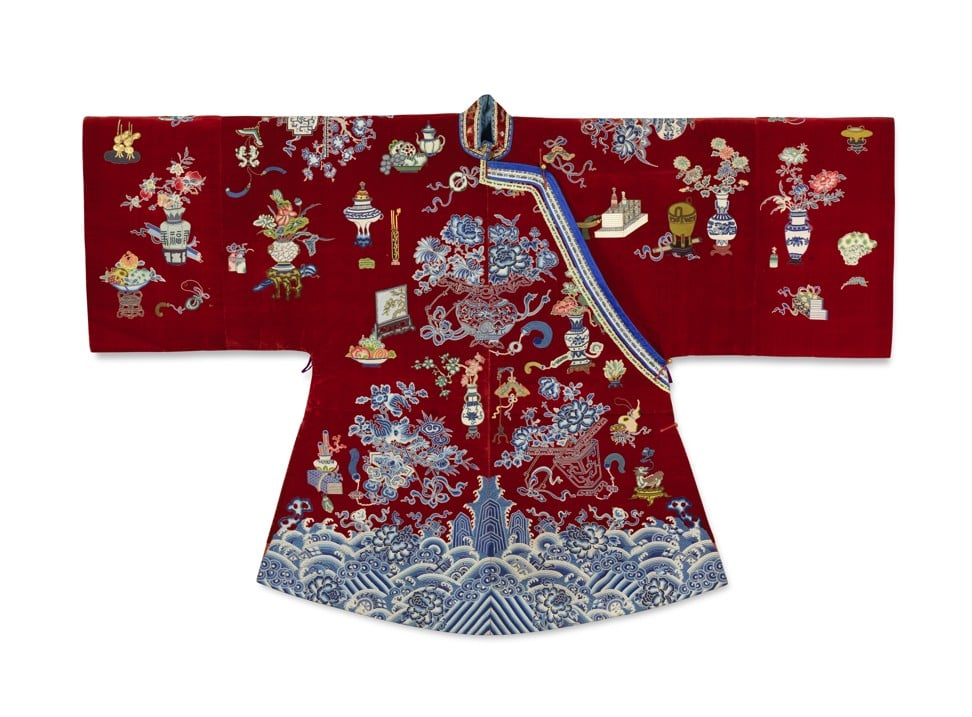
The robes and jackets give way to the more modern and short-sleeved qipao, for example. As the decades pass, it can also be seen how Chinoiserie and Japonism became popular among American and European jewellers, who would incorporate exotic materials into their designs, such as coral, jade and lapis lazuli.
“Themes such as pagodas, pavilions, birds and flowers were frequently featured,” Fong says.
In both China and Japan, modernisation arose from within the countries themselves. China resisted foreign interference during the two opium wars and the 1900 Boxer Rebellion.
It was Empress Dowager Cixi, says Fong, who broke the long-standing traditions of Confucian segregation of men and women, and bound feet, and introduced education for women in the early 1900s.
Five famous concubines who shaped Chinese history, from Empress Dowager Cixi back 2,000 years
Fong points to a series of Qing dynasty paintings, “A Beauty at Leisure”, on loan from the Palace Museum in Beijing, which indicates how women lived in their quarters with their dressers and, in some cases, writing tables.
Paintings throughout the exhibition illustrate how hairstyles and make-up could be as rigid as other Confucian customs. A series of Japanese paintings, “Mirror of historical eras”, shows how Japanese women would have their long black hair tied up in different ways depending on their status, how eyebrows would be plucked, and how faces were made up with bright red lips and blackened teeth, which was a sign of beauty.
The exhibits on show at Crowning Glory are a mix of permanent items from Fung’s collection and other collectors’ treasures.
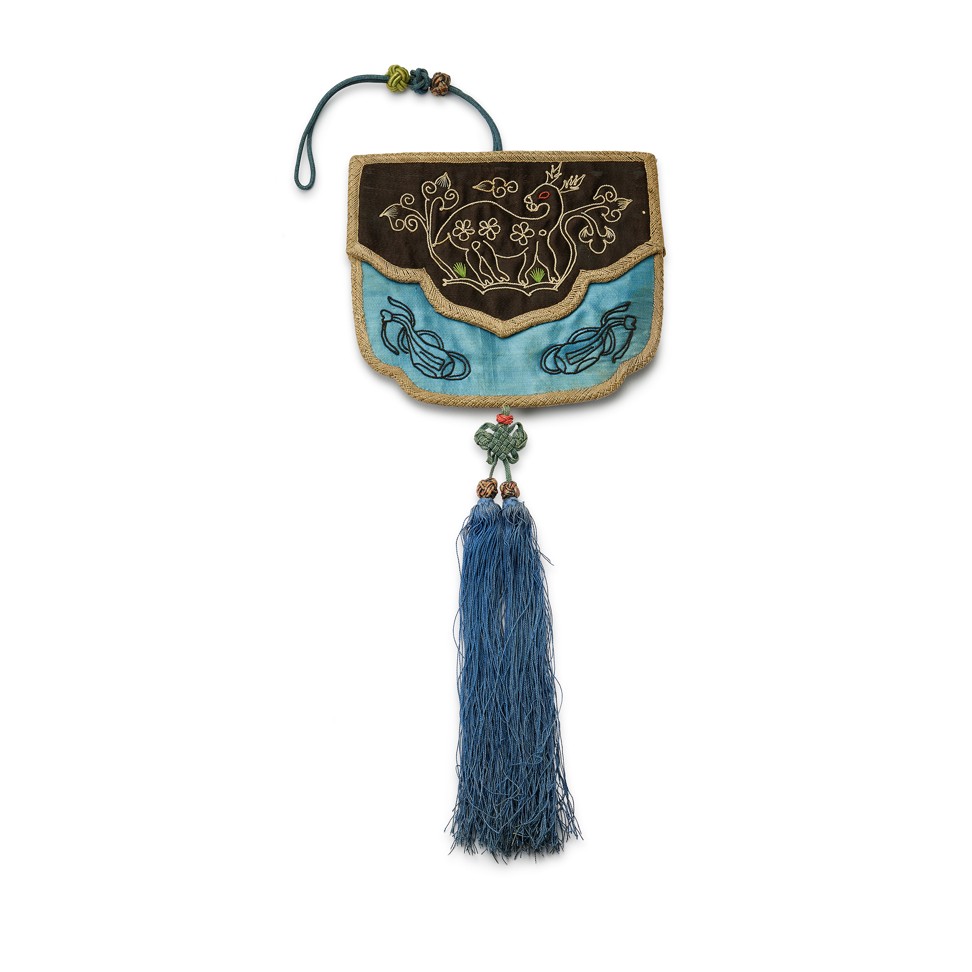
One room houses a display of intricate combs, tiaras and other ornamental objects provided by Peter Chu Kit-wing, all of which contain vibrant blue kingfisher feathers in their artistry.
“In the 1970s, my sister was the chief curator of the Hong Kong Museum of Art,” Chu says. “She gave me a hairpin with a kingfisher feather inlay, and I was fascinated by the technique. Since then, I’ve collected them and do research on [the technique].”
The tour de force of Chu’s collection is a phoenix crown, which would have been a key ornament in ancient China. Such headwear indicated a woman’s power and status, with the number of dragons, phoenixes and pheasants representing her rank. His, Chu says, was once owned by an empress.
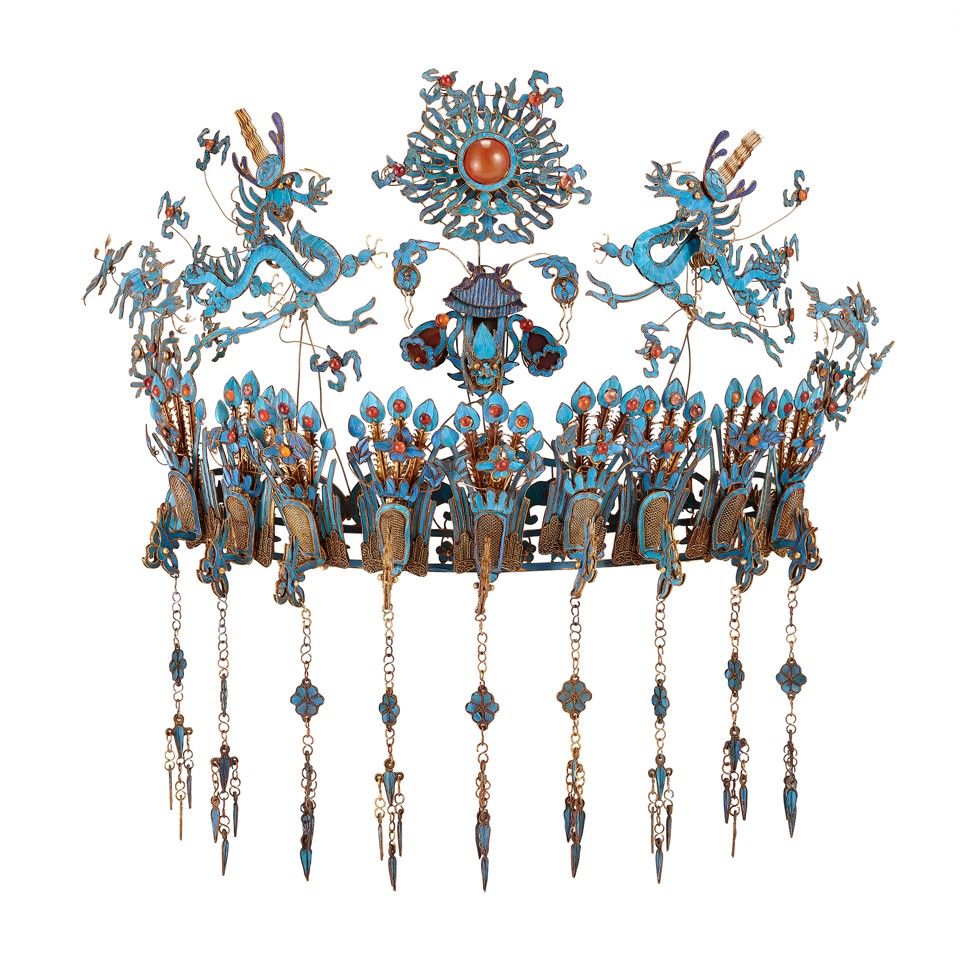
“The technique involves the delicate inlay of kingfisher feathers onto coiled metal plates. The first thing to do is to create a base of a crown, which includes various types of shapes,” Chu says. “One needs to distinguish the thickness and colour of the kingfisher feather before attaching it, then cut the feather according to shape of the base.
“The glueing process is difficult because the feathers are fragile,” he adds. “Therefore the craftsman had to be mindful not to breathe too heavily. The glue used for the inlay is glutinous rice starch or cowhide, which has to be kept at a specific temperature, as it will lose its adhesiveness if it becomes dry.”
Chris Hall, a Hong Kong-based retired tax adviser, also has a collection of kingfisher jewellery at home. “Kingfisher feather was a very popular decoration in China. In fact, much of the wealth that built Angkor in Cambodia came from the export of kingfisher feather to China,” he says.
Life inside the Forbidden City: how women were selected for service
“By the late 19th century, China was using so much kingfisher feather [that the bird] nearly became extinct. Every lady would have kingfisher feather, where it was stuck on to silver.”
The last kingfisher feather factory shut down in China in the 1930s, according to Fong.
Hall has also lent Chinese robes and ladies’ jackets for the exhibition. He began to collect textiles in 1978, when he happened to pass an auction in Hong Kong and it was love at first sight. Hall says his collection of textiles is regarded as one of the top 10 in the world and includes items dating back 2,000 years. (A range of old kimonos are also on display, belonging to Japanese collector Akemi Takahashi.)

As well as Hall’s larger textiles, he has also provided small items such as purses from Dalian, in northeastern China, and little bags filled with sweet-smelling herbs – an early potpourri – that would have been carried around when the streets were not quite as sweet-smelling.
It is easy to apply 21st century sensibilities and judgment to now abandoned customs from the past. Much early make-up used lead in the pigment, for example – a beauty application that could be lethal. Then there were the bound feet of aristocratic Chinese women in the Qing dynasty, crippled to look like a small lotus flower.
But Hall is quick to point out that each century can be judged. “People in 500 years’ time will look back at us and our actions at a time of climate change and global warming,” he says.
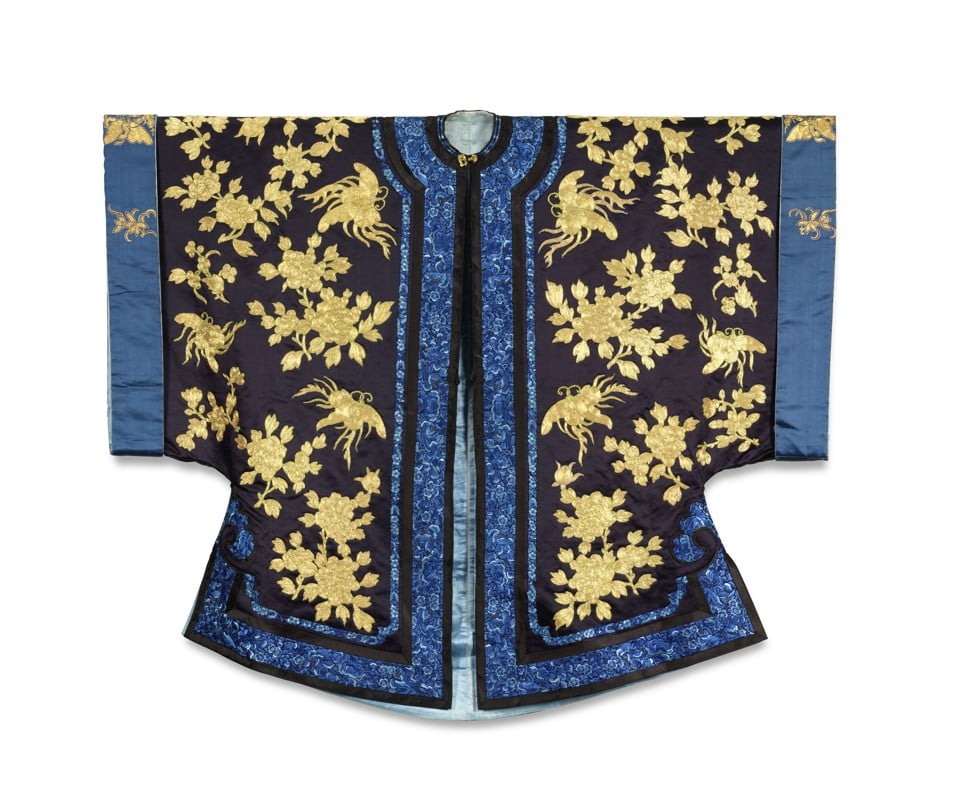
As the collection moves into the late 19th and early 20th centuries, Fong indicates some of the vanity cases, which women would have filled with silver-backed brushes, powder boxes and glass bottles, were the size of a travel case.
Compacts from Van Cleef and Arpels, and Cartier, with rubies, tortoiseshell and enamel replicate “Eastern” design and illustrate continuing crossovers of culture.
The exhibition is a salute to women and how their lives would become more liberated in the 20th century. It is also a tribute to the exquisite craftsmanship of the carpenters and jewellery designers whose work – in some cases – would have taken months to complete.
Crowning Glory: The Beauty of Ladies’ Ornaments from Asia and Europe is on show at the Liang Yi Museum until February 27.
